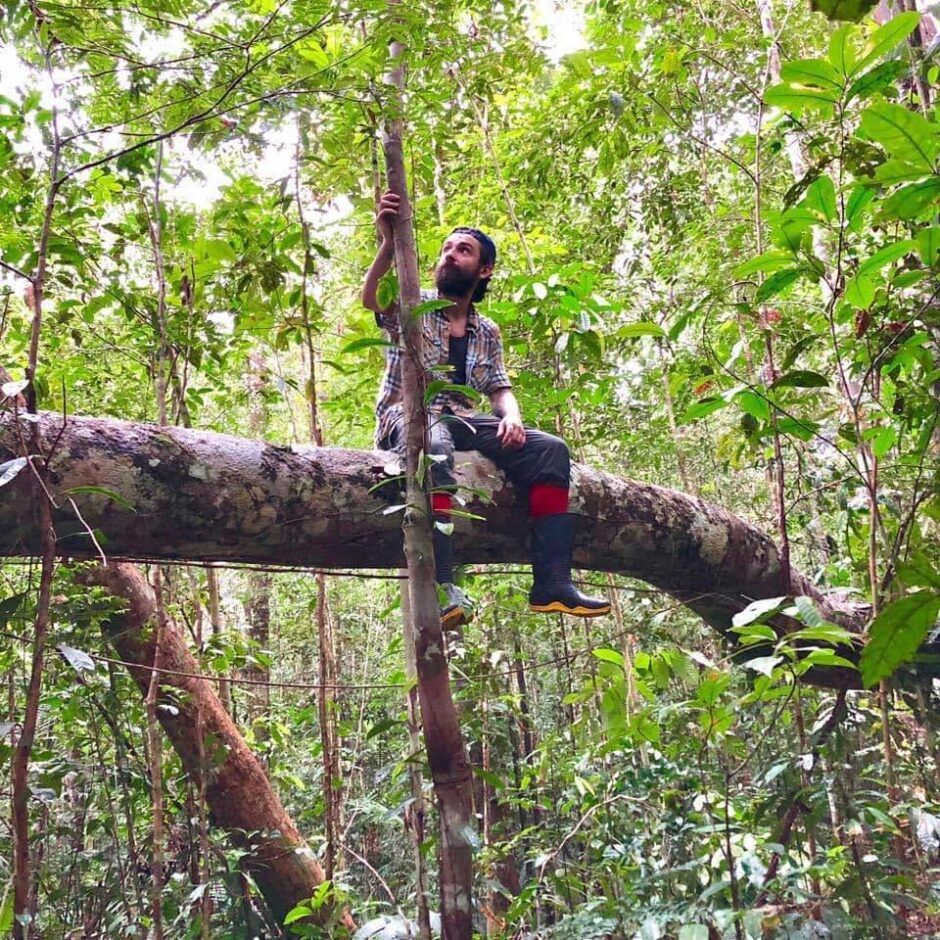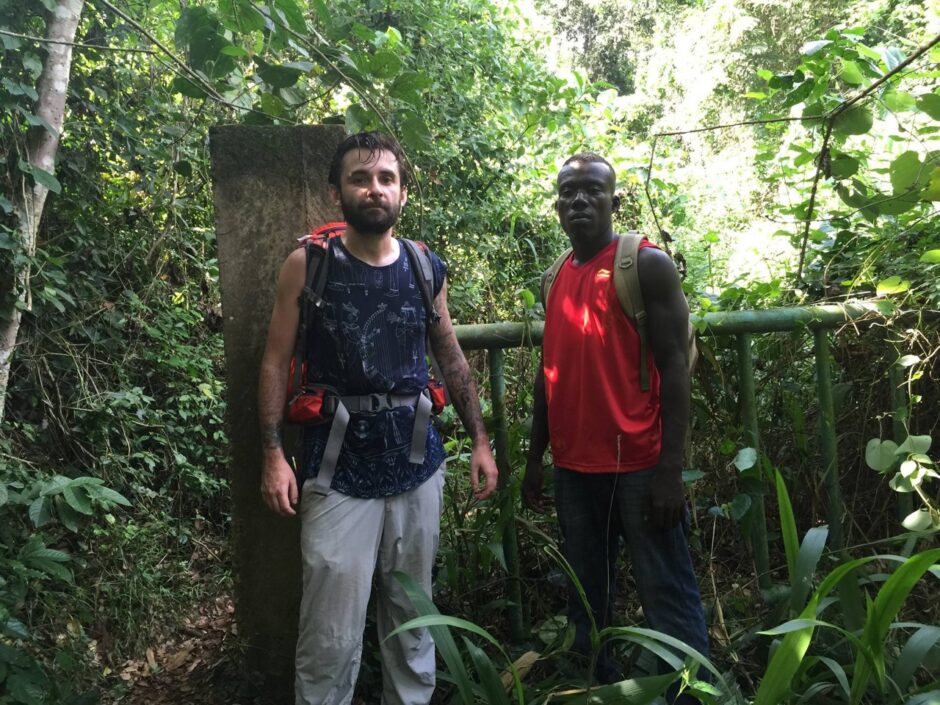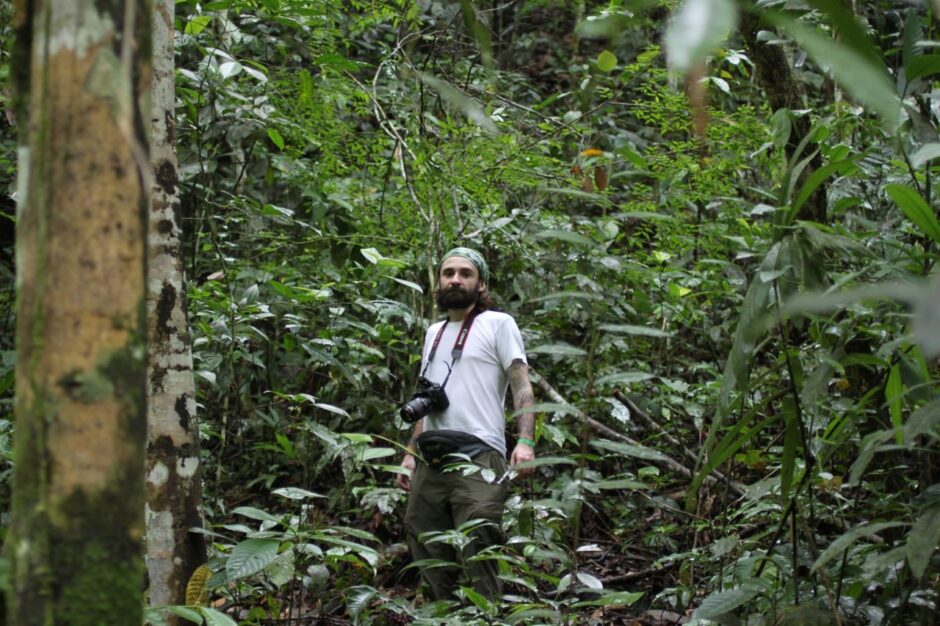School of Forest Resources and Conservation, University of Florida
Contact
Research Summary
I am currently a Postdoctoral Researcher in the UF Forest Entomology Lab. My background is on the diversity and evolutionary ecology of insect-fungi associations, especially parasites within the order Hypocreales. Currently, I am investigating the diversity of ambrosial fungi and how these groups might have evolved with their beetle vectors and plant hosts. Overall, I am very interested to understand the evolutionary processes that shaped both antagonistic and symbiotic lineages of fungi and how they relate with their insect host biology.
Education
- 2005–2009: B.S in Biology, CES/JF (Brazil).
- 2010-2012: M.Sc. in Biodiversity, Universidade Federal do Amazonas (Brazil).
- 2013-2017: PhD in Biology, Pennsylvania State University (USA);
Postdoctoral experience
- 2017-2019: Pennsylvania State University, Entomology Deaprtment (USA).
- 2019-2020: University of the Ryukyus, Tropical Biosphere Research Center (Japan).
- 2020–present: University of Florida, School of Forest Resources and Conservation (USA).
- Araújo J.P.M., Moriguchi G. M., Uchyiama S., Kinjo N., Matsuura Y (2020). Ophiocordyceps salganeicola, a parasite of social cockroaches in Japan and insights into the evolution of other close-related Blattodea-associated lineages. IMA Fungus (BMC).
- Araújo J.P.M., Evans H.C., Hughes, D.P. (2020). Zombie-ant fungi across continents: five new species within Ophiocordyceps. II. Myrmecophilous hymenostilboid species, a novel zombie lineage. Mycologia. https://doi.org/10.1080/00275514.2020.1822093
- Imirzian, N., Araújo J.P.M., Hughes D.P. (2020). A new Zombie-ant Behavior Unravelled: aggregating in tree trunks. Journal of Insect Pathology. 177: 107499.
- Li Y., Yu H., Araújo J.P.M., Zhang X., Ji Y., Hulcr J. (2020). Esteya floridanum sp. nov.: An Ophiostomatalean Nematophagous Fungus and its Potential to Control the Pine Wood Nematode. Phytopathology. https://doi.org/10.1094/PHYTO-06-20-0229-R
- Lisboa D.O., Evans H.C., Araújo J.P.M., Elias S.G., Barreto, R.W. (2020). Moniliophthora perniciosa, the mushroom causing witches’ broom disease of cacao: insights into its taxonomy, ecology and host range in Brazil. Fungal Biology. 124: 983–1003.
- Saltamachia, S.J. & Araújo, J. P. M. (2020). Ophiocordyceps desmidiospora, a basal lineage within “Zombie-Ant Fungi” clade. Mycologia. https://doi.org/10.1080/00275514.2020.1732147.
- *Araújo J.P.M., Hughes, D.P. (2019). Zombie-ant Fungi Emerged from Non- Manipulating, Beetle-Infecting Ancestors. Current Biology. 29: 1–4. https://doi.org/10.1016/j.cub.2019.09.004.
- *Araújo J.P.M., Evans H.C., Kepler R., Hughes D.P. (2018). Zombie-ant fungi across continents: 15 new species and new combinations within Ophiocordyceps. I. Myrmecophilous hirsutelloid species. Studies in Mycology. 90: 1–42. https://doi.org/10.1016/j.simyco.2017.12.002.
- Evans H.C., Araújo J.P.M., Halfeld V.R., Hughes, D.P. (2018). Epitypification and re- description of the zombie-ant fungus, Ophiocordyceps unilateralis (Ophiocordycipitaceae). Fungal Systematics and Evolution. 1: 13-22. https://doi.org/10.3114/fuse.2018.01.02.
- *Loreto RG, Araújo J.P.M., Kepler R., et al. (2018). Evidence for convergent evolution of host parasitic manipulation in response to environmental conditions. Evolution. 72: 2144. https://doi.org/10.1111/evo.13489.
- Araújo J.P.M., Hughes, D.P. (2017). The Fungal Spore: Myrmecophilous Ophiocordyceps as a case study. In: The Fungal Community: Its Organization and Role in the Ecosystem (Dighton J, White JM, eds). CRC Press, USA. ISBN 9781498706650.
- *Araújo J.P.M., Hughes DP (2016). Diversity of Entomopathogenic Fungi: Which Groups Conquered the Insect Body? Advances in Genetics. 94: 1-39. https://doi.org/10.1016/bs.adgen.2016.01.001.
- Crous, P.W, Wingfield, M.J., Burgess, T. I., et al. (2016) Molecular phylogeny and Evolution of Fungi – Persoonia. 37: 218-403. https://doi.org/10.3767/003158516X694499.
- Hughes DP, Araújo J.P.M., Loreto RG, et al. (2016) From so Simple a Beginning: The Evolution of Behavioral Manipulation by Fungi – Advances in Genetics. 94: 437-469. https://doi.org/10.1016/bs.adgen.2016.01.004.
- Barbosa B.C., Halfeld V.R., Araújo J.P.M., et al. (2015). Record of Ophiocordyceps unilateralis sensu lato, the zombie-ant fungus, parasitizingCamponotusin an urban fragment of Atlantic Rainforest in southeastern Brazil. Studies on Neotropical Fauna and Environment. 50: 1-3. https://doi.org/10.1080/01650521.2014.991213.
- Araújo J.P.M., Evans H.C., Geiser, D.M. et al. (2015). Unravelling the diversity behind the Ophiocordyceps unilateralis (Ophiocordycipitaceae) complex: Three new species of zombie-ant fungi from the Brazilian Amazon. Phytotaxa. 220: 224-238. https://doi.org/10.11646/phytotaxa.220.3.2.
- Quandt A.C., Kepler R.M., Gams W., Araújo J.P.M., et al. (2014). Phylogenetic-based nomenclatural proposals for Ophiocordycipitaceae (Hypocreales) with new combinations in Tolypocladium. IMA Fungus. 5: 121-134. https://doi.org/10.5598/imafungus.2014.05.01.12.
- Araújo J.P.M., Coimbra V.R.M., Wartchow F. (2011). Leucopaxillus gracillimus (Tricholomataceae, Basidiomycota): new record from Northeast Brazil and notes on its distribution. Kurtziana. 36: 5-9. https://www.cabdirect.org/cabdirect/abstract/20198648977.
- Albuquerque H.R., Araújo J.P.M., Putzke J. (2007). Chromocyphella muscicola (Fr.) Donk. (Basidiomycota, Agaricales): primeira citação para o Brasil. Revista Brasileira de Biociências. 5: 999-1001. http://www.ufrgs.br/seerbio/ojs/index.php/rbb/article/view/815/687.



